Steemit Learning Challenge-S21W3; Cervical Radiculopathy"
11 comments
Hello Everyone
This is @max-pro from, #Bangladesh
Assalamu Alaikum friends. Wishing everyone good health. Hope you all are well. By the grace of Allah I am also well. Today I came to participate in the wonderful learning competition organized by our teacher @ashkhan. The topic of this competition is Steemit Learning Challenge-S21W3; Cervical Radiculopathy". So it is a very important exercise competition where we can learn some important exercises. So let's begin.
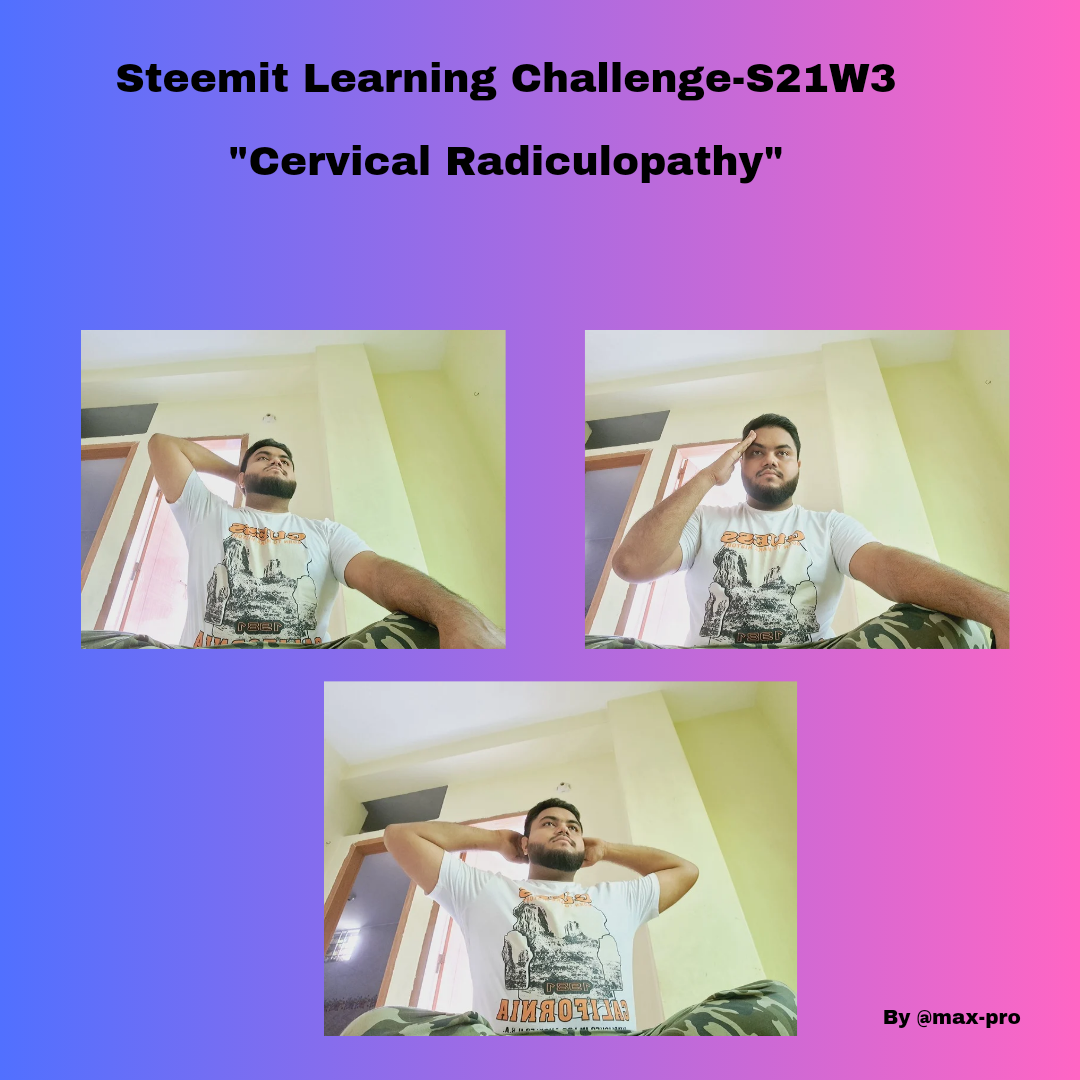 Made by Canva
Made by Canva
| What's Cervical Radiculopathy? Write in your own words after getting knowledge from the lesson post. |
|---|
Cervical radiculopathy is a condition where the nerve roots in the neck (cervical spine) are compressed or damaged. It is usually caused by bone loss or disc degeneration in the neck spine. When these nerve roots are compressed, pain, weakness, or numbness is felt in the area where the nerve travels. It can cause pain or severe tingling or numbness in the shoulders, arms, hands and fingers.
| Reasons | 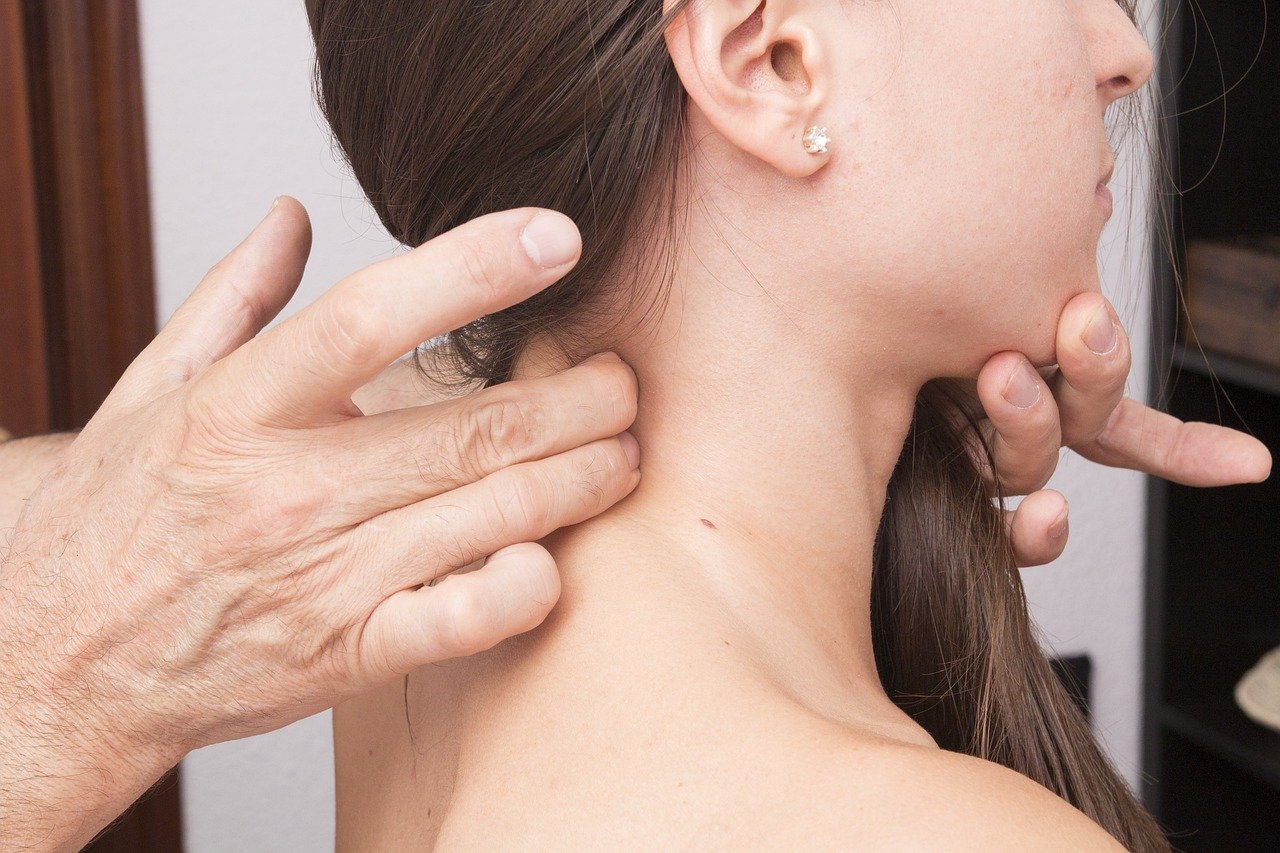 source source |
|---|
| Disc Herniation | Disc material within the vertebrae of the spine protrudes and puts pressure on the nerve roots. |
|---|---|
| Bone spurs | Extra bone growth puts pressure on nerve roots. |
| Degenerative disc disease | With age, the moisture content of the spinal disc decreases and begins to break down. |
Symptoms
- Pain in the neck that spreads to the shoulder or arm.
- Arm or hand weakness.
- Tingling or paralysis.
- In some cases, there may also be problems like sensitivity or loss of muscle control in arms and fingers.
In this case, the treatment to be taken Commonly used to treat these conditions:
| Medication | Analgesic and anti-inflammatory drugs. |
|---|---|
| Physical Therapy | Strengthening muscles and increasing flexibility. |
| Injection | Epidural steroid injection helps reduce pain. |
| Surgical treatment | If other treatments do not work in a case, then surgery can solve the problem. |
It is important to have proper knowledge of cervical radiculopathy and seek early treatment to reduce pain and return to normal life.
| How would you diagnose a Cervical Radiculopathy? Any clinical investigation or assessment tests? |
|---|
Doctors follow several steps and tests to diagnose cervical radiculopathy. A proper evaluation will require a clinical history, physical examination, and various diagnostic tests. So at the beginning I will listen to the patient's symptoms as a clinical history. So the doctor will first listen to the history of his problem from the patient. What kind of pain the patient is experiencing, where the pain spreads, how long the pain lasts etc. is important. Then listen to the history of past injuries or illnesses. A history of previous neck injury, surgery, or disc problems is important.
As a physical exam, the doctor evaluates the strength, touch and reflexes of the arms, hands and fingers. Doctors perform various exercises to test nerve function. The doctor observes the various movements of the neck and determines in which particular position the pain is more intense. A test is then done where the patient tilts his head to one side to see if the pain increases or not when he applies slight pressure. This may indicate compression of a nerve in the neck.
| Imaging and other diagnostic tests |  |
|---|
| X-ray | Abnormalities of the spine and cervical vertebrae are checked. |
|---|---|
| Magnetic Resonance Imaging | Provides detailed information about the condition of spinal discs and nerve roots. It is the most reliable imaging test for radiculopathy. |
| CT Scan | May be used to assess bone loss or other changes. |
| Electromyography and Nerve Conduction Studies | Helps determine nerve function and degree of nerve contractility. |
| Try to practice at least 3 exercises that you have learned from the lesson. Share images, gifs or videos while practising. |
|---|
01 - Isometrics Neck Retraction
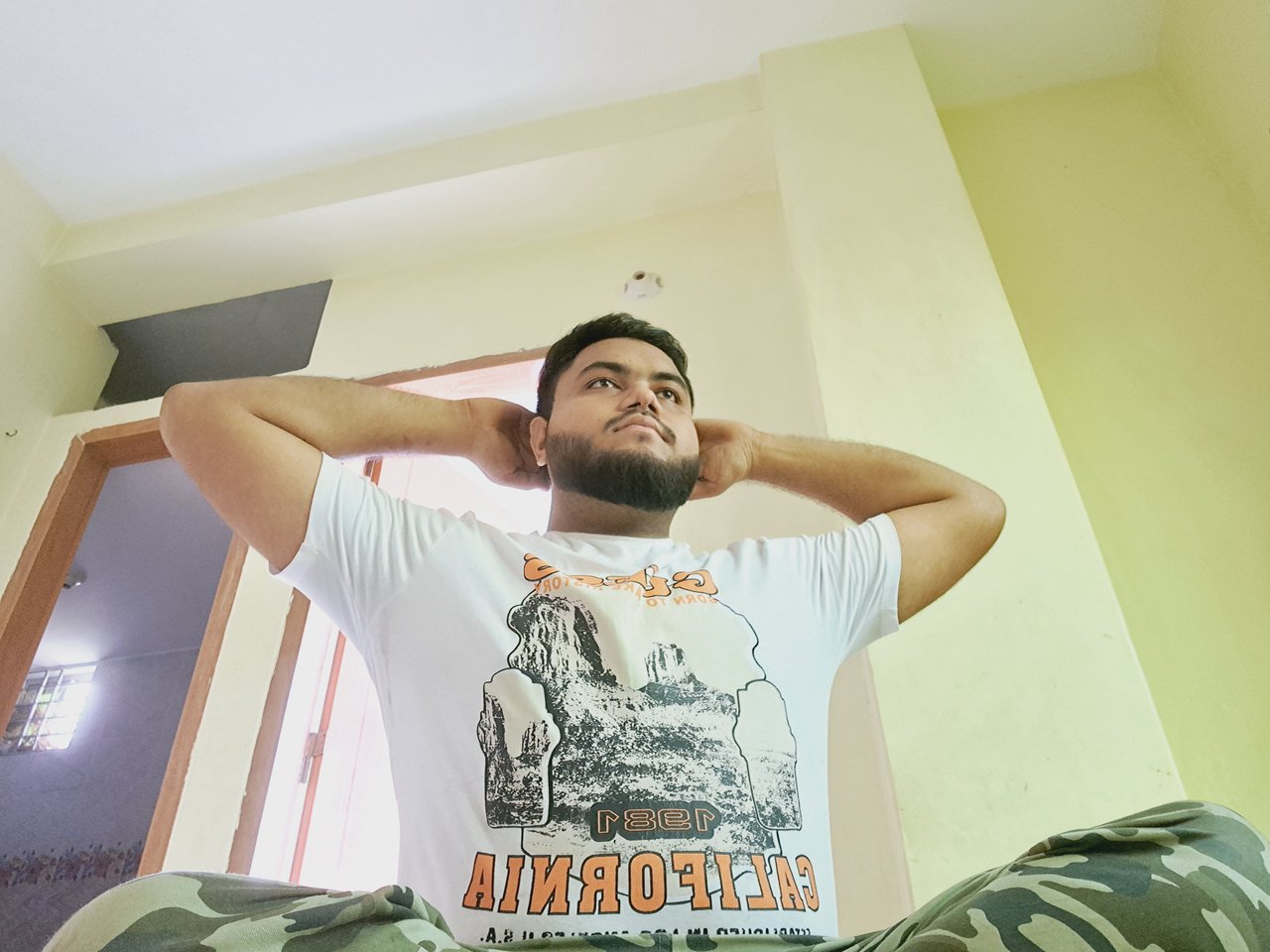 My own image
My own image
- Isometrics neck retraction is an exercise in which the muscles behind the neck are held tight but no visible movement of the neck occurs. It helps to strengthen the neck muscles and keep the cervical spine in proper position. In this exercise, a person pulls his neck back rather than pushing it forward and returns to the normal position after holding for a while.
02 - Isometric Cervical Rotation
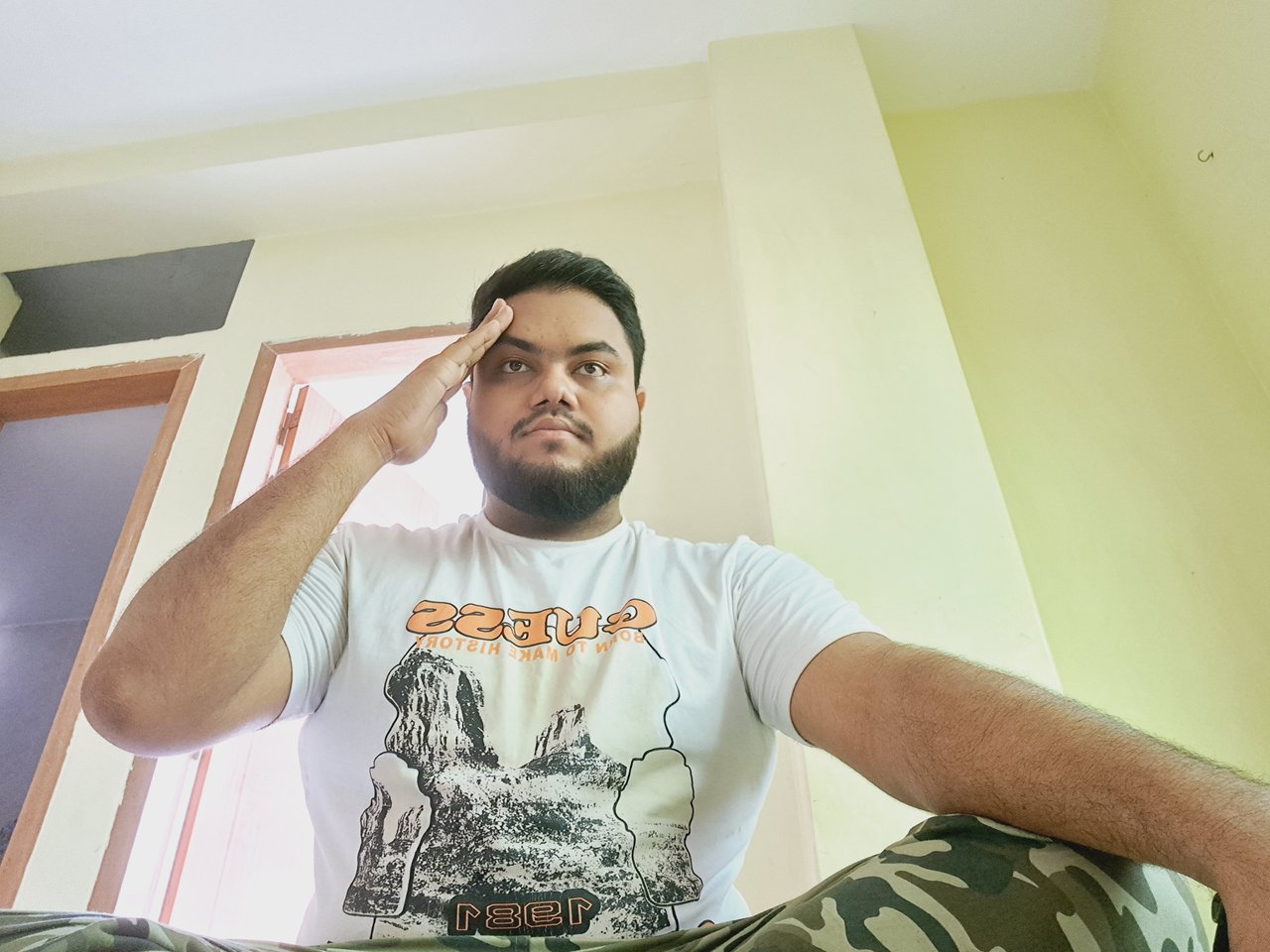 My own image
My own image
https://youtube.com/shorts/3MSWLRe0p_0?si=lYPJJW6Qdw6m_Fd5
- Isometric cervical rotation is to increase neck muscle strength and stability. It strengthens the neck muscles, reduces pressure on the nerves and provides mobility and support to the cervical spine. This exercise helps maintain neck stability by increasing the endurance of the muscles around the neck, which is useful in preventing the recurrence of cervical radiculopathy or other neck problems.
03 - Isometrics Neck Extension
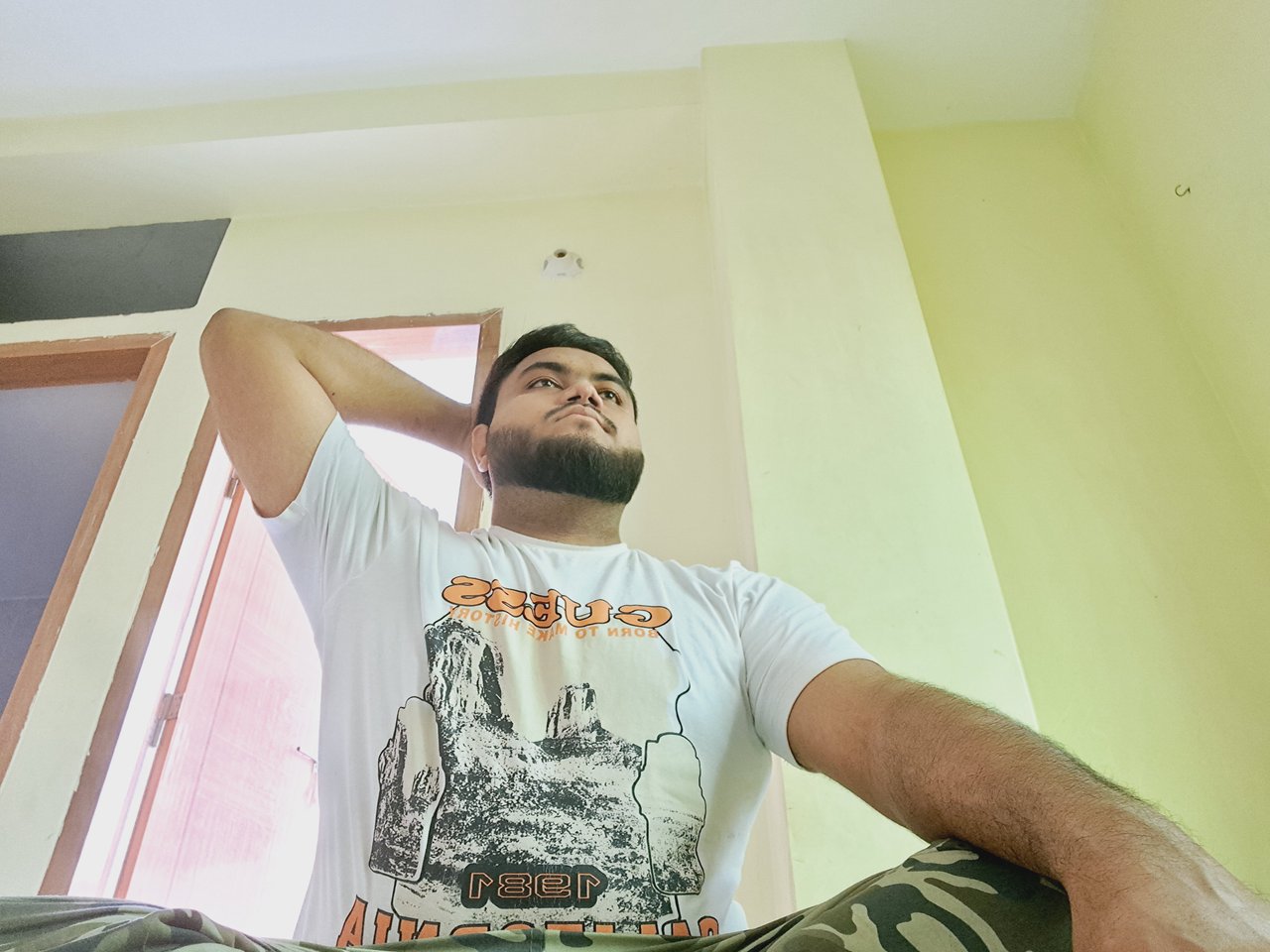 My own image
My own image
- The main function of isometric neck extension is to strengthen the muscles behind the neck and increase stability. It helps maintain muscle tension and support in the back of the neck, which is effective in maintaining proper neck posture and preventing neck strain-related pain.
| Share your review after performing these exercises either on yourself, healthy individual or patient. |
|---|
There is no substitute for learning in this learning competition. So after doing isometric neck retraction, extension and cervical rotation exercises I noticed that my neck muscles increased in strength and stability. Below is a picture of each exercise.
 | Isometrics Neck Retraction |
|---|
 | Isometric Cervical Rotation |
|---|
 | Isometrics Neck Extension |
|---|
In particular, I felt a good stretch in the muscles in the front and back of the neck which helped strengthen them. These exercises have improved my neck mobility and control and help maintain proper neck alignment during daily work. Overall these exercises have proven effective in reducing neck stress and providing relaxation.
These exercises increase the strength, stability and performance of the neck muscles. Regular practice of isometric neck retraction, extension, and cervical rotation helps maintain proper neck alignment and prevent pain or injury. These exercises play an important role in improving the normal activity and comfortable condition of the neck. I have learned a lot by participating in this competition.
So I am Inviting my lovely Steemian friends @patjewell, @irawandedy, @selina1 to Participate in this Competition.

Comments